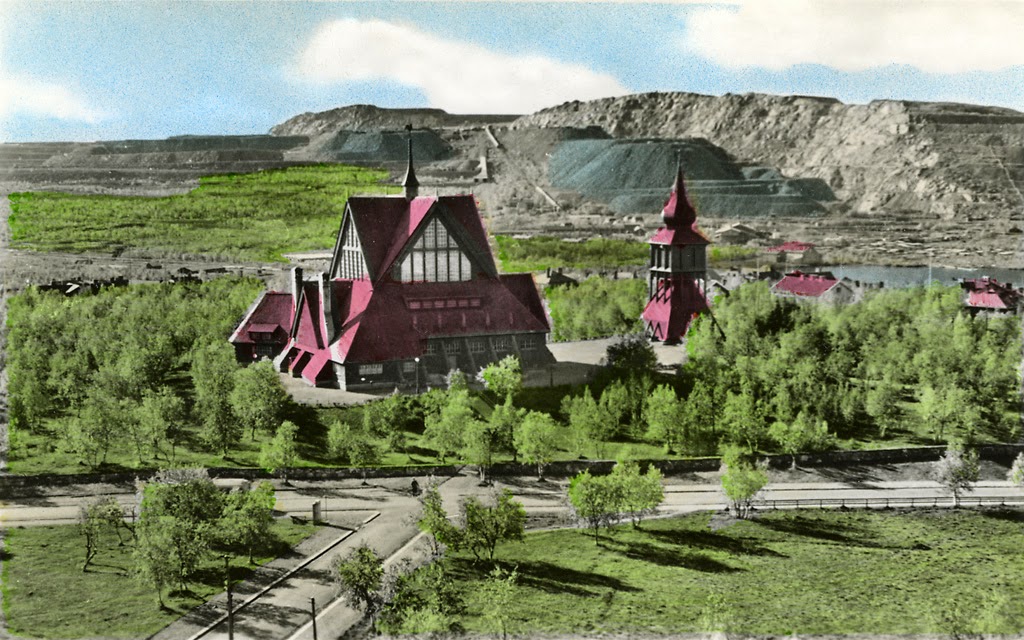Hand-tinted postcards are generally associated with the early decades of the 20th century. By the middle of the century, colour photomechanical printing had mostly taken over.
I was thus delighted to find these hand-tinted postcards from Sweden in the 1950s, published by the Swedish postcard company Almquist and Cöster. The modern clothes and cars contrast with the old-school selective stencil tinting in such a striking way.
 |
| Swedish National Heritage Board |
The Square in Haparanda. Source
 |
| Swedish National Heritage Board |
The bar at Skrea beach in Falkenberg. Source
 |
| Swedish National Heritage Board |
The camping ground at Skrea beach in Falkenberg. Source
 |
| Swedish National Heritage Board |
Kiruna church, in Lapland, with the Kiirunavaara mountain and mine in the background. Source
 |
| Swedish National Heritage Board |
Sunne Church, Värmland. Source
 |
| Swedish National Heritage Board |
People at Olofsbo beach in Falkenberg. Source
 |
| Swedish National Heritage Board |
Geologgatan (Geologist street) in Kiruna, Lapland. Source
 |
| Swedish National Heritage Board |
Part of the upper square in Åsele, Lapland. Source
 |
| Swedish National Heritage Board |
Kungsgatan (King street) in Avesta, Dalarna, Sweden. Source
 |
| Swedish National Heritage Board |
Varberg Fortress, Halland. Source
 |
| Swedish National Heritage Board |
View of the City Hall, Stockholm (this is pretty much exactly how it looked the time I was there!). Source
 |
| Swedish National Heritage Board |
"Spektrumhuset" (Spectrum Building) at the Railway Square in Umeå. Source
 |
| Swedish National Heritage Board |
The ferry berth in Varberg, Halland, Sweden. Source
 |
| Swedish National Heritage Board |
The "Kaffestugan" café at Skrea beach in Falkenberg. Source
 |
| Swedish National Heritage Board |
Midnight sun at lake Luossajärvi in Lapland. Source

No comments:
Post a Comment